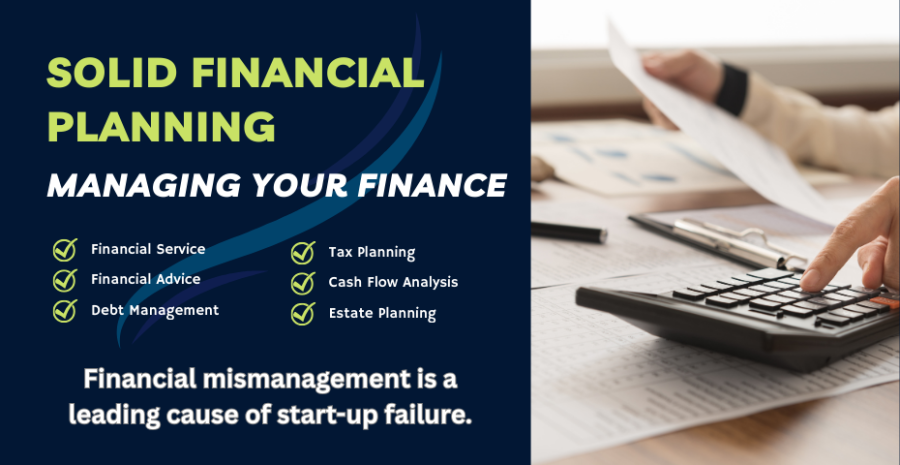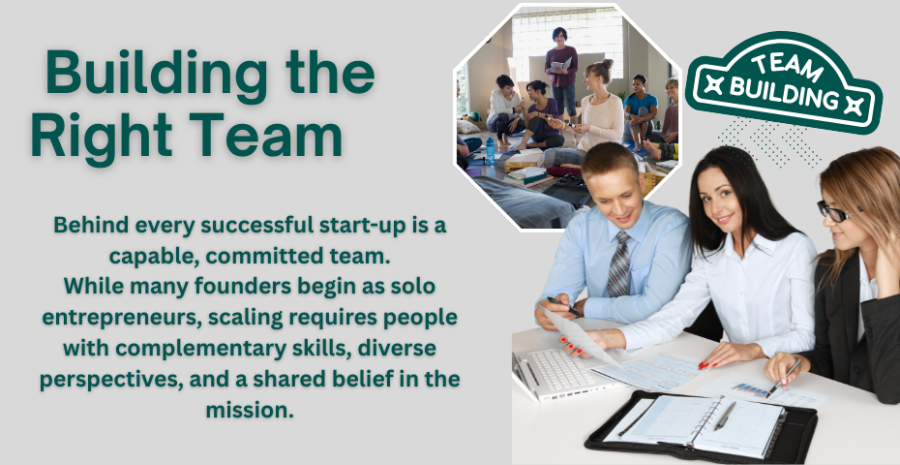

In the modern era, technology and digitalization have significantly lowered the barriers to entrepreneurship. Cloud computing, affordable software-as-a-service tools, global talent marketplaces, and social media marketing have made it easier than ever for anyone with a good idea to launch a start-up.
Entrepreneurs can now validate concepts, reach customers, and build operations faster and cheaper than any generation before them. However, despite this unprecedented accessibility, the statistics are sobering: approximately 20% of start-ups fail within their first year, and many more fold within the first three to five years. The reasons behind these failures are complex, yet they often share common patterns that can be anticipated and avoided.
At first glance, most failed ventures seem to have been built on ideas that were flawed or poorly timed. But the reality is more nuanced. Many start-ups are founded on genuinely innovative, potentially lucrative ideas. The real stumbling block is not always the idea itself - it’s the execution.
A good idea without a clear, detailed, and actionable plan is little more than a dream, and like all dreams, it eventually collides with reality. Entrepreneurs must recognize that vision is important, but without a roadmap grounded in market realities, financial sustainability, and customer acquisition strategies, even the brightest idea will struggle to gain traction.
A strong business plan acts as the bridge between vision and execution. It serves as both a navigational chart and a risk management tool, guiding the entrepreneur through market analysis, operational planning, funding requirements, and growth targets.
Critically, it transforms abstract concepts into measurable, achievable objectives. SMART goals - Specific, Measurable, Achievable, Relevant, and Time-Bound - are central to this process. They not only clarify what success looks like but also create benchmarks for tracking progress and making timely adjustments.
For aspiring entrepreneurs, understanding why start-ups fail is not an exercise in pessimism but a necessary step in risk mitigation. By studying common failure points and aligning their strategies with proven success factors, founders can dramatically improve their odds of building a sustainable enterprise.
The following eight points outline the most critical elements of start-up planning and execution, offering practical insights for turning a promising idea into a thriving business in the digital age.

The first and perhaps most critical step in any start-up journey is to ensure there is a real, sustainable market for your product or service.
Too many entrepreneurs fall in love with their ideas without testing whether they solve an actual problem that customers are willing to pay for. Market research goes beyond demographic data - it involves understanding customer behavior, purchasing habits, and competitive landscapes.
Validation requires concrete actions such as running surveys, building prototypes, conducting beta tests, and engaging with potential customers before full-scale launch.
Dropbox, for example, famously validated demand for its cloud storage service with a simple explainer video before investing in product development.
By gauging interest early, they secured a user base and investor confidence.
Entrepreneurs must resist the temptation to assume that their idea will “just work” because it appeals to them personally.
Objective data, not personal conviction, should guide the decision to move forward.

A start-up without a clear, sustainable revenue model is essentially operating on hope. While some businesses can afford to operate at a loss during their early stages, long-term survival depends on generating revenue that exceeds costs.
This requires identifying all potential income streams, pricing strategies, and monetization methods from the outset.
Consider how Spotify entered the crowded music streaming market with a freemium model - offering free, ad-supported streaming alongside paid premium subscriptions.
This allowed them to attract millions of users while gradually converting a percentage into paying customers. Your revenue model must be specific, scalable, and adaptable to changes in market conditions.
Vague expectations like “we’ll figure it out later” often lead to cash flow crises and premature closures.

Financial mismanagement is a leading cause of start-up failure. Even with a great product and strong demand, poor budgeting, uncontrolled spending, or insufficient capital reserves can sink a business quickly.
A strong financial plan includes detailed forecasts for expenses, revenue, and cash flow, along with contingency funds for unexpected challenges.
Elon Musk’s Tesla faced multiple near-bankruptcies but survived through disciplined cost management and strategic fundraising at critical moments.
Financial planning also means being realistic about costs - many founders underestimate marketing expenses, operational overhead, and customer acquisition costs.
Without a detailed, regularly updated financial plan, entrepreneurs risk running out of resources before achieving profitability.

Behind every successful start-up is a capable, committed team.
While many founders begin as solo entrepreneurs, scaling requires people with complementary skills, diverse perspectives, and a shared belief in the mission.
Hiring the wrong people—or worse, tolerating poor performance - can derail momentum and drain resources.
Airbnb’s early success was built not only on a creative idea but on a team that combined design skills, business acumen, and relentless execution.
Strong founders understand the value of building culture from day one, fostering collaboration, and investing in leadership development.
The right team not only executes the vision but also contributes fresh ideas and solutions when challenges arise.

Acquiring customers is vital, but retaining them is what builds long-term profitability. Too many start-ups focus exclusively on rapid user growth without ensuring that customers stick around.
The most successful businesses balance acquisition with retention through excellent customer experience, responsive support, and value-added engagement.
Consider Amazon’s Prime program - it not only attracts new members but creates loyalty through benefits like free shipping, exclusive deals, and streaming content.
Start-ups should define their customer journey, map out touchpoints, and implement retention strategies from the very beginning.
The cost of retaining a customer is typically far lower than acquiring a new one, making it a critical component of profitability.
![]()
Vague goals such as “grow the business” or “increase sales” provide no clear path to action. SMART goals - Specific, Measurable, Achievable, Relevant, and Time-Bound - create actionable targets that guide day-to-day decisions and long-term strategies.
For example, instead of aiming to “get more customers,” a SMART goal might be “Acquire 500 new paying customers within the next six months through targeted social media advertising and referral incentives.” Tracking progress against these goals enables timely adjustments and keeps the entire team aligned.
Google’s use of OKRs (Objectives and Key Results) is a real-world example of structured goal setting that drives measurable outcomes across large, complex organizations.

The start-up environment is inherently unpredictable. Market conditions change, new competitors emerge, and customer needs evolve.
Adaptability means being able to pivot when necessary without losing sight of the overall vision. Agility ensures that the business can implement changes quickly and efficiently.
Netflix’s transformation from DVD rentals to streaming and later to original content is a prime example of adaptability in action.
This shift required not only technological investment but also a fundamental change in the company’s business model.
Start-ups must be prepared to test, iterate, and even abandon strategies that no longer work, all while maintaining operational momentum.

Ultimately, even the most brilliant plan is worthless without consistent execution. Execution is about turning strategies into results through disciplined operations, clear accountability, and continuous performance monitoring.
Many start-ups fail because they lack the processes to sustain consistent delivery on their promises. Apple’s success is not solely due to innovative products but also its meticulous execution in design, manufacturing, marketing, and retail.
Consistency builds trust with customers, investors, and partners, while poor execution quickly erodes credibility.
Start-ups that excel in execution treat every operational detail as an opportunity to reinforce their brand and deliver value.
The ease of starting a business in the digital era can be misleading. While technology and innovation have democratized access to entrepreneurship, they have not eliminated the need for rigorous planning, disciplined execution, and continuous adaptation.
Start-ups that survive and thrive are those that approach their journey with the same seriousness and structure as established enterprises, even in their earliest days.
They validate their markets, build sustainable revenue models, manage their finances with precision, and surround themselves with capable teams.
They acquire customers strategically, retain them through value and service, set SMART goals, remain adaptable, and execute consistently.
A good idea is a starting point, but it is not a guarantee of success. In the competitive landscape of modern business, execution, planning, and adaptability are what separate the few enduring start-ups from the many that fade quickly.
Entrepreneurs who internalize these eight principles position themselves to not only launch successfully but to build lasting enterprises that can navigate uncertainty and seize opportunities as they arise.
In short, while the barriers to entry have never been lower, the standards for success have never been higher- and those prepared to meet them will be the ones who endure.

About: Andries vanTonder (66)
Over 46 years selfemployed
He is a Serial Entrepreneur, an Enthusiastic supporter of Blockchain Technology and a Cryptocurrency Investor
Find me at my Markethive Profile Page | My Twitter Account | My Instagram Acount | and my Facebook Profile.
